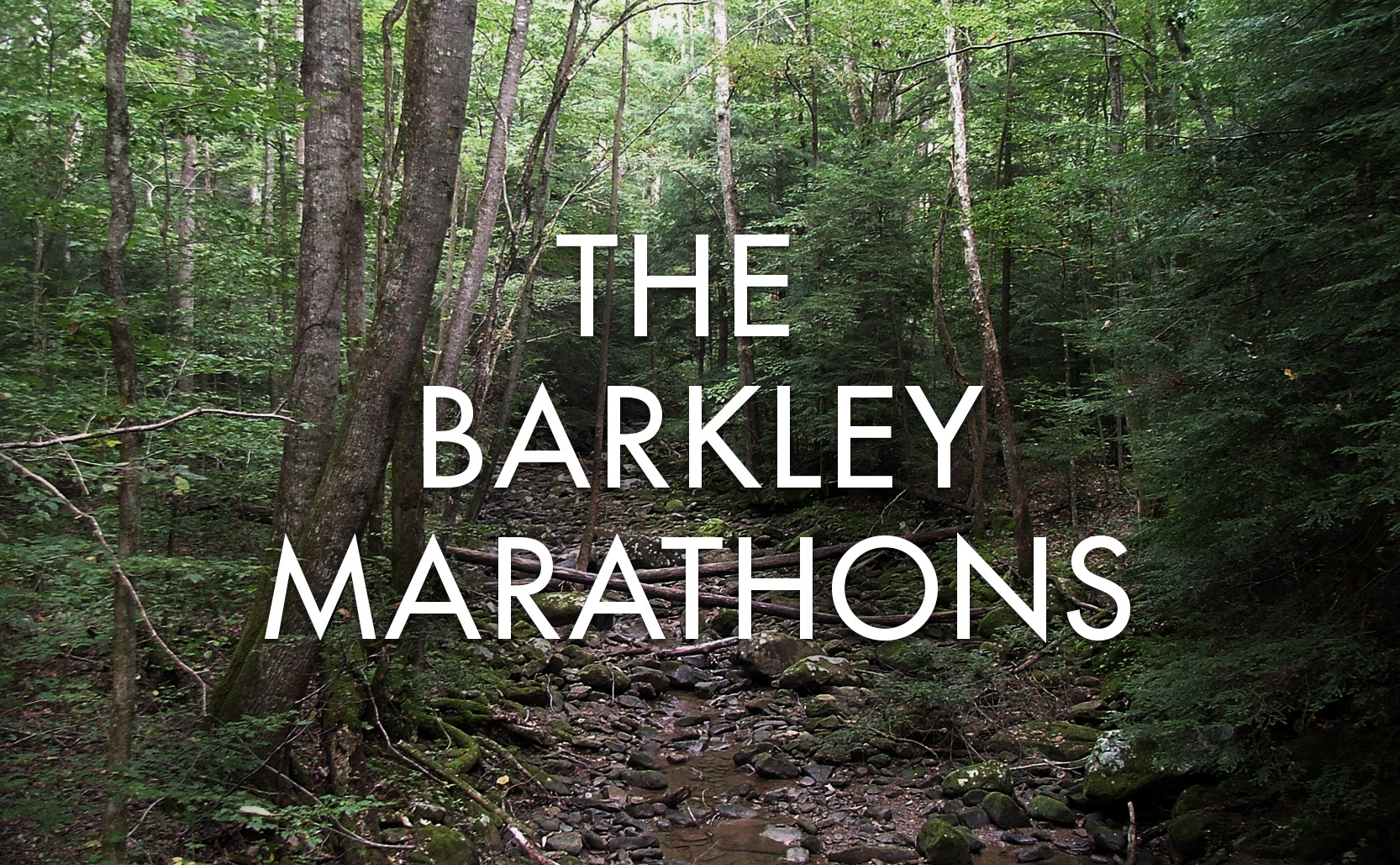the Barkley Marathons
The Barkley Marathons is an ultramarathon that is “set up for you to fail.”
For runners who find the traditional marathon distance of 26.2 miles not challenging enough, there is the ultramarathon. An ultramarathon is any race beyond 26.2 miles. Some are a set distance while others are a set time with runners going as many miles as they can within that time.
While all ultras are grueling, some are particularly noteworthy. The Badwater 135 is a 135 mile race going from the lowest point in California to the base of the highest, from Death Valley to the trailhead of Mt. Whitney. The Marathon des Sables (The Marathon of the Sands) is 150 miles of running in the Moroccan portion of the Sahara Desert where runners have to carry their own food & water. Part of the entrance fee also covers the repatriation of your corpse should you die. While there is no real ranking of the most difficult ultras, one that makes every list is the Barkley Marathons.

The Barkley
Set in the rugged hills of Eastern Tennessee, the Barkley Marathons is an annual race where 35 to 40 runners look to run 100+ miles in less than 60 hours. The course is 5 laps around the woods of Frozen Head State Park, up and down the hills of mostly unmarked trails. There is no electronic tracking and participants are not allowed any GPS devices, leaving runners to wayfind by map & compass. To prove you’ve made each full lap you find books in the woods at designated places and tear out the page corresponding to your running bib number. Because of the many hills the total cumulative elevation gain is around 54,000 feet, or 2 Mount Everests in 3 days.
The Barkley Marathons is universally considered one of the hardest races in the world. Most people who start never finish. The temperature changes, the distance, the lack of sleep (the race runs day & night), and the terrain (the hills, the thorns, the uneven ground) all work against you. Founded in 1986 by Gary “Lazarus Lake” Cantrell, more than half of the races have ended with no-one completing the course. As of 2021 the full race has only been completed 18 times by 15 runners – around a 1.3% completion rate.
The idea for the race came from the 1977 escape of James Earl Ray from the Brushy Mountain State Penitentiary (which is located beside Frozen Head State Park). In 55 hours Ray only made it 8 miles from jail because of the terrain. Cantrell felt that in 55 hours he should have been able to make it 100 miles, and so began the Barkley Marathons.

How and why would you do this?
The registration process to enter the Barkley is a secret. There is no website. Entrants pay a $1.60 entry fee and write an essay on why they should be allowed to participate. First time participants are also required to bring their license plate with them which Cantrell strings together and hangs like a curtain at the starting area. For repeat participants Cantrell requests some article of new clothes that he is in need of (flannel shirts, socks, etc.). Each year one person is allowed to participate who Cantrell knows will almost certainly fail, the “human sacrifice.” This person is given bib number 1.
Why would someone do this? As with running a regular 26.2 mile marathon, or any sort of endurance challenge, participants want to know what they are capable of. For most people winning isn’t the goal (or even an option). You’re in competition with yourself more so than with the other runners. People want to see, when really put to the test, what can they accomplish? What are they made of? The Barkley Marathons sits at the edge of impossibility, giving participants the rare chance to learn about themselves and see what they’re made of.
“If you’re going to face a real challenge it has to be a real challenge. You can’t accomplish anything without the possibility of failure.”
GARY “LAZARUS LAKE” CANTRELL, Barkley Marathons founder


